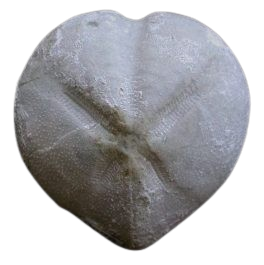Fossil Coast Drinks Co is pleased to introduce Steve Snowball as a guest blogger who will be sharing his knowledge, experience and expertise about fossil hunting at St Oswald's Bay on the Jurassic Coast of Dorset between Durdle Door and Lulworth Cove. Steve is an accomplished author of "A Guide to Fossil Collecting in England & Wales" and co-author of four other highly acclaimed guides to fossil collecting on the Dorset coast.

St. Oswald’s Bay is a delightful and seldom-visited fossil hunting location, that displays a range of rocks from the Cretaceous Period and would suit fossil enthusiasts who are prepared to be patient. The fossils present here need to be carefully extracted from the Chalk and Upper Greensand boulders and rocks, so a fleeting visit with the hope of quick wins is unlikely. You’ll need a geological hammer, a rock chisel and some safety goggles, with adequate time and some effort to work for your finds.
As a location, it can be busy in summer, as it lies only a short way from Lulworth Cove and it’s true to say that better conditions for finding fossils is during the winter or early spring months, when the rocks have been exposed to the elements, and erosion has taken place.
Fossils from this location can include many typical of the Grey and White Chalk and Upper Greensand, so ammonites, belemnites, echinoids, bivalves and sponges are likely and perhaps rarer shark teeth.

The beach is accessed by parking at Lulworth Cove (BH20 5RS) and then walking west, for less than a mile towards Durdle Door, up the short, hilly road, past Stair Hole and the red brick houses.
At the end of the tarmac, an easy footpath leads to some muddy steps, near an old landslide and from here down onto the beach.
The access down to the beach from Dungy Head is fairly difficult now (May 2024) as the path down the cliff has dropped about 3 meters in a slip in the clay there and it is currently still moving slowly.
There's also pockets of deep mud nearby so be careful when crossing the slip!

As with any Chalk or Upper Greensand locality, you’ll need to bring some basic tools with you, in order to extract the fossils. As with any such location, fallen blocks are best to search and remember hammering into the bedrock is not permissible. Fossils can sometimes be prised from the surrounding matrix, without damage to them or the rock. Take a geological hammer, a rock chisel and some goggles for eye protection, as well as a stout holdall.
Above Left: Micraster sp. echinoid in Upper Greensand matrix at St. Oswald’s Bay | Above Middle Top: Schloenbachia ammonite | Above Middle Bottom: Heteromorph ammonite | Above Right: Anisoceras from the Grey Chalk
Resting below the overlying Chalk is the Upper Greensand a course sandy sediment which probably reflects a minor regressive phase, during which the lower sea level reduced the distance from land and allowed sand to be reintroduced to the area. Overlying the Upper Greensand is the Chalk; both the Grey Chalk and White Chalk subgroups.
Please note the beach platform and cliffs are assigned SSSI (Site of Special Scientific Interest) status, which requires visitors avoid damaging (including hammering) the area. From a fossil collecting perspective this means it’s not permitted to extract specimens that are in situ. Collecting efforts should be directed towards the loose boulders on the foreshore. As with all coastal locations, a fossil hunting trip is best timed to coincide with a falling or low-tide.
Top Left: A block of bivalves | Top Right: small nautilus from the Upper Greensand Formation | Bottom: The echinoid, Cardiaster ananchytes
In the Upper Greensand, there are rich, well-preserved brachiopod, echinoids and bivalves, with a great variety of species. Gastropods can also be collected. If the Greensand is freshly exposed on the foreshore, it is quite soft but exposure to air turns it, quite literally, rock hard.

Both the Grey Chalk (formerly known as the Lower Chalk) and the White Chalk (formerly the Upper Chalk) are present at this location and a large number of fallen blocks at beach level allows generally good collection of fossils. Being in fallen blocks, there is no SSSI stipulation about collecting or hammering and chiselling into the rocks.
Common fossils from the Chalk
Top Left: Inoceramus sp. bivalve | Top Middle: Mantelliceras sp. ammonite | Top Right: Echinoid, Micraster coranguinum
About Guest Blogger - Steve Snowball

Steve Snowball spent a total of 35 years working in education; initially as a teacher, then as a headteacher and finally as an education advisor in West Sussex. He retired to live on the Jurassic Coast of West Dorset, where he was able to pursue his keen interest in collecting fossils and spending time walking his dogs, enjoying landscape photography, oil painting and gardening. Steve is the author of ‘A Guide to Fossil Collecting in England & Wales’ and co-author of a series of four other highly-acclaimed guides to fossil collecting on the Dorset coast, all published by Siri Scientific Press.





















